Mars Hydro TSL-2000: Grow Update & Interim Review
Remember the goal of this grow is to produce seed, not maximizing plant size and bud production. One branch on each plant of each of the three strains (Sapphire Scout, Candida, and Cream & Cheese) has been treated with STS (silver thiosulfate) to force them into production of all-female pollen. The two untreated plants have been moved to my other tent, and continue vegging out. Today was the start of 12/12 lighting and the stretch for the treated plants. Here is the tent today:
Plants Under the Mars Hydro TSL-2000 at the Start of the Stretch
The Mars Hydro TSL-2000 has out-performed the King X6 Dimmable 1800W COB LED Grow Light I used for my previous grows during the vegetative stage of growth. Both lights draw close to the same amount of power. The TSL-2000 draws 300.8W, while the X6 draws 315W. The Mars Hydro TSL-2000 is longer at 39.9" (1m) while the X6 is 15.8" (402mm), with the COBs covering less than 12" (300mm). What this means for us as growers is that the TSL-2000 provides a more even light intensity from side to side in the tent. In other words, the plants at the sides of the tent get close to the same amount of light as those under the center of the light.
The nodes are tight, and growth has far outpaced that of the plants I've grown under the X6. Both lights cost close to the same, with the X6 being $10 USD more expensive. I highly recommend the TS series of lights for the vegetative stage of growth. Remember, I have not reached the flowering stage yet, so I can't comment on its performance during that stage.
Improvements that could be made to the TS series of lights:
- Individual power switches for each power supply;
- bring the intensity adjustment out of the power supplies; and
- add a level to the light's long axis.
The intensity controls are accessed through a cover on the two power supplies. This makes them difficult to access after the light has been installed. They are more of a 'set and forget' control than one that can be used to adjust the light's intensity throughout the grow.
There is no power switch on the light. It would be nice to have a separate power switch for each power supply. During parts of a grow (seedling, early veg) the plants have a much smaller footprint than just before harvest.
Both of these come into play for a light that is used from seed through harvest. At the seedling through early vegetative stages only half of the light is usually needed, and a much lower intensity can be used. As the plants are up-potted both sides of the light are needed, but the intensity of the light does not need to be at it's maximum. At the lower intensity the light can be positioned closer to the canopy. The control for the intensity can be a single potentiometer, or two potentiometers sharing the same shaft.
A level on the light would make it easy to adjust the height above the canopy. With two hangers for the light often one end of the fixture will be higher than the other. I currently use a level to keep it even, but it would be nice to have one built-in.
Suggestions on how to implement these improvements:
1. Modify the power supplies so that an external control can be plugged into them (3mm audio jacks).
2. Kit #1: Remote Power Supplies. This would include a mounting plate for the power supplies, and extension cables for the power supply to LED circuit board. The cable should be at least three meters in length. One end should be two cables 50cm long followed by a single coiled cable that stretches to a one meter length. followed by single cable without the coil, and connectors for the cables from the power supply. The coiled cable would keep it out of the way, and the tent looking neat.
3. Kit # 2: Extra Controls. This would have the power switches and intensity controls mounted in a connection box. Pig tails would be provided that plug into the the power supplies modified as per #1 to control the intensity. Power connections would be a screw terminal style making it easy for those without electrical experience to make the connections.
Note on heat:
The light does get hot, as there are no cooling fans. Whether fans are used or not, the light will produce the same amount of heat. With the fans some folks have installed, the heat is drawn away from the light; BUT the same amount of heat is put into your tent. I'm certain the engineers at Mars Hydro have taken this into consideration when designing these lights. The higher temperatures will still be within tolerances for a long life.
Overall I'm very pleased with the Mars Hydro TSL-2000. It has performed very well during the vegetative stage, and I'm looking forward to seeing how it does during flowering. Whether you have one of these lights, or not, please help our sponsor Mars Hydro by commenting on my suggestions.











 to the forum!
to the forum! .
.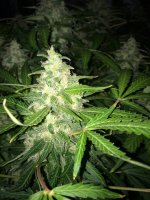
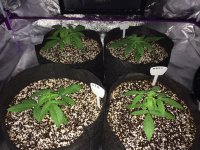
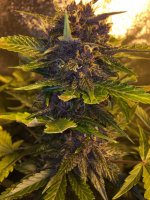
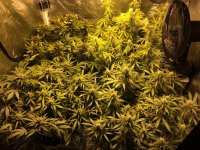
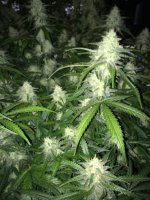
 And you are right, there are some reasons inside to make the light more affordable for more clients. But I will also let our engineer know the advices as well, try to make the lights with more advantages while still stay the affordable price.
And you are right, there are some reasons inside to make the light more affordable for more clients. But I will also let our engineer know the advices as well, try to make the lights with more advantages while still stay the affordable price. 
 It is white color but full spectrum light with a PPE around 2.35~2.58umol/j, help you save more energy and get great result as well.
It is white color but full spectrum light with a PPE around 2.35~2.58umol/j, help you save more energy and get great result as well.